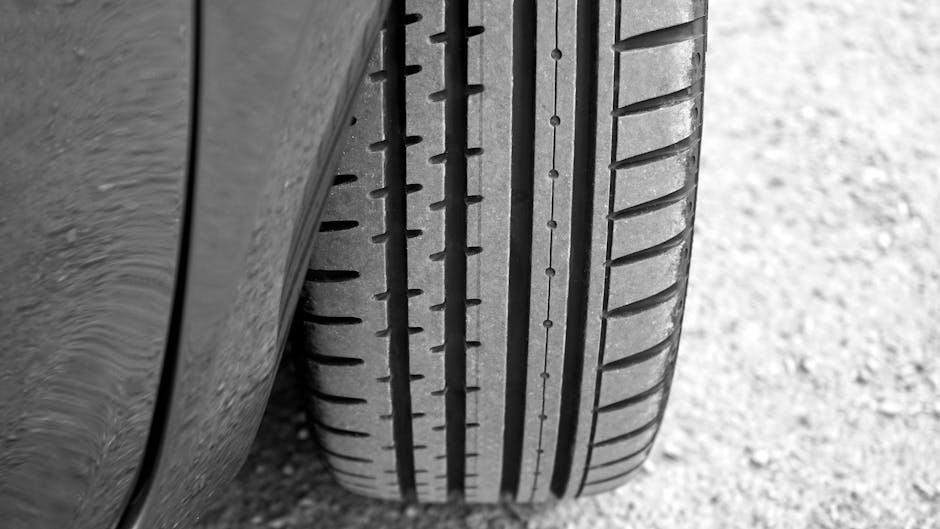Imagine your car drifting ever so slightly to the left every time you hit the road — a subtle nudge that, over time, wears down your tires unevenly and makes the drive less smooth. Much like that car, the human body relies on precise alignment to function optimally. But what happens when this balance is off? Is bad alignment just a minor inconvenience, or could it pose serious risks to our health and well-being? In this article, we will explore the meaning of bad alignment, its potential dangers, and why paying attention to this often-overlooked aspect might be more important than you think.
Table of Contents
- Understanding the Fundamentals of Alignment and Its Role in Health
- The Hidden Risks of Prolonged Poor Alignment
- How Bad Alignment Impacts Joint and Muscle Function
- Recognizing Warning Signs of Dangerous Misalignment
- Practical Steps to Correct and Prevent Alignment Issues
- When to Seek Professional Help for Alignment Concerns
- Q&A
- Future Outlook

Understanding the Fundamentals of Alignment and Its Role in Health
Alignment within the human body refers to the proper positioning of bones, muscles, and joints, ensuring they function cohesively. When alignment is off, it can disrupt this harmony, leading to uneven stress on tissues and potentially causing pain or discomfort. Maintaining good alignment is not just about posture; it’s about preserving the natural flow of movement and avoiding unnecessary wear on your body’s structures. Consider alignment as the blueprint for the body’s optimum operation—if the foundation shifts, everything built upon it can suffer.
Common consequences of poor alignment include:
- Chronic pain in the back, neck, or joints due to misbalanced load.
- Reduced mobility from stiffness or maladaptive movement patterns.
- Increased risk of injury as muscles and ligaments can become overstretched or strained.
| Body Region | Potential Impact of Misalignment |
|---|---|
| Spine | Disc compression, nerve irritation |
| Hips | Uneven gait, hip pain |
| Shoulders | Muscle imbalance, reduced range of motion |

The Hidden Risks of Prolonged Poor Alignment
When the body remains out of alignment over extended periods, subtle changes begin to creep in, often unnoticed until discomfort becomes a routine companion. These small deviations can set off a domino effect, impacting everything from joint function to nerve signaling. Over time, muscles may compensate by tightening or weakening, creating a hidden battlefield of tension and imbalance. The consequences aren’t just physical; misalignment can also contribute to chronic headaches, fatigue, and even decreased concentration as the body struggles internally to maintain equilibrium.
Consider these sneaky side effects:
- Increased wear on cartilage leading to premature arthritis
- Spinal nerve compression causing radiating pain or numbness
- Postural adaptations that alter gait and increase injury risk
- Disrupted breathing patterns due to rib and diaphragm misalignment
| Hidden Risk | Potential Impact | Early Warning Signs |
|---|---|---|
| Joint degeneration | Loss of mobility | Stiffness, joint pain |
| Muscle imbalance | Chronic soreness | Asymmetrical strength |
| Nerve irritation | Numbness, tingling | Sharp or radiating pain |

How Bad Alignment Impacts Joint and Muscle Function
Misalignment in the body can subtly sabotage your joint and muscle health over time. When bones and joints shift out of their natural positions, it forces muscles to compensate, often resulting in uneven tension and strain. This imbalance not only accelerates wear and tear on cartilage but also disrupts the fluid mechanics that keep joints supple and moving smoothly. Over time, this can lead to chronic pain, reduced mobility, and even early onset arthritis as the body struggles to adapt to improper biomechanics.
The ripple effects extend to muscle function as well, where bad alignment can hinder optimal muscle activation and coordination. Some muscles become overworked and tight, while their antagonists weaken and lose tone, creating a cycle of dysfunction. This imbalance can manifest in symptoms like stiffness, spasms, or the infamous “weak link” syndrome where injury risk increases dramatically. Understanding these impacts highlights the importance of maintaining proper alignment through posture awareness, targeted exercises, or professional intervention.
| Impact | Consequence | Potential Solution |
|---|---|---|
| Joint Stress | Cartilage degradation, inflammation | Physical therapy, supportive braces |
| Muscle Imbalance | Poor coordination, increased injury risk | Strengthening & stretching routines |
| Reduced Mobility | Joint stiffness, limited range of motion | Regular movement, ergonomic adjustments |

Recognizing Warning Signs of Dangerous Misalignment
When your body’s alignment is off, it’s not always obvious at first glance. However, subtle cues can signal a potentially dangerous misalignment before chronic pain or serious injury sets in. Watch out for frequent headaches, uneven shoulder heights, or persistent stiffness in areas like the neck, lower back, and hips. These seemingly minor inconveniences may actually be your body’s way of crying out for realignment. Ignoring these signs can lead to worsening problems—making early detection crucial for maintaining long-term health and mobility.
Key indicators to monitor include:
- Unequal shoe wear patterns indicating shifted weight distribution
- Chronic fatigue after simple tasks, hinting at inefficient muscle use
- Repeated joint popping or unusual clicking sounds during movement
- Persistent numbness or tingling sensations in the limbs
| Symptom | Possible Cause | Action |
|---|---|---|
| Uneven shoulders | Spinal scoliosis or muscle imbalance | Consult a physical therapist |
| Lower back pain | Pelvic tilt or poor posture | Adjust seating posture, engage in corrective exercises |
| Frequent headaches | Neck misalignment affecting nerves | Seek chiropractic assessment |

Practical Steps to Correct and Prevent Alignment Issues
Start by prioritizing regular inspections of your vehicle’s alignment at trusted service centers or by qualified mechanics. Proper alignment adjustments not only enhance your car’s safety but also improve fuel efficiency and tire longevity. Incorporate simple habits like avoiding potholes, curbs, and aggressive driving, which can disrupt alignment over time. When a misalignment is detected, timely correction through a professional wheel alignment service is essential — this involves adjusting the angles of the wheels to meet manufacturer specifications.
In addition to professional care, adopting a maintenance routine can prevent future issues. Key preventive measures include:
- Regular tire rotation: Ensures even wear and balanced traction.
- Maintaining correct tire pressure: Reduces stress on suspension and alignment.
- Suspension checks: Early detection of worn parts helps maintain alignment integrity.
| Step | Benefit |
|---|---|
| Professional Wheel Alignment | Improves safety and extends tire life |
| Tire Rotation | Promotes even tire wear |
| Correct Tire Pressure | Reduces suspension strain |
| Suspension Inspections | Detects issues before alignment affected |

When to Seek Professional Help for Alignment Concerns
Recognizing the critical moments when alignment issues require expert attention can prevent minor discomfort from evolving into chronic conditions. If you experience persistent pain, noticeable uneven wear on shoes, or difficulty steering your vehicle straight, these are clear signals that professional evaluation is necessary. Ignoring such signs can accelerate damage, affect fuel efficiency, or compromise safety on the road.
Consider these key indicators that warrant a visit to an alignment specialist:
- Uneven tire wear despite regular rotation and inflation
- Vehicle drifting to one side even on flat roads
- Unusual vibrations through the steering wheel or chassis
- Steering wheel misalignment when driving straight
| Symptom | Potential Consequence |
|---|---|
| Uneven Tire Wear | Reduced tire lifespan |
| Vehicle Pulling | Increased fuel consumption |
| Steering Wheel Off-Center | Impaired handling |
| Steering Vibrations | Driver fatigue |
Timely intervention not only safeguards your vehicle’s performance but also enhances overall safety. When in doubt, a quick alignment check at a certified service center can provide peace of mind and prevent costly repairs down the road.
Q&A
Q: What does “bad alignment” mean in the context of the body?
A: Bad alignment refers to the mispositioning of the body’s joints, muscles, or bones, often leading to an unnatural posture. Think of it like a crooked frame holding up a painting—the picture doesn’t hang as it should, and over time, the frame weakens.
Q: Can bad alignment actually be dangerous?
A: While bad alignment might not always cause immediate alarm, it can be a silent troublemaker. Over time, it may lead to chronic pain, joint wear, and increased risk of injury, making everyday movements more taxing and sometimes harmful.
Q: How does bad alignment affect the body’s joints?
A: Misaligned joints experience uneven pressure, which accelerates wear and tear. Imagine a door hinge that’s bent; it creaks and deteriorates faster. Similarly, joints under strain can develop inflammation, arthritis, or instability.
Q: Is bad alignment linked only to the spine, or does it involve other parts?
A: Bad alignment spans far beyond the spine. It can affect feet, knees, hips, shoulders—anywhere where posture and movement harmony matter. Each misalignment can ripple through the body, disrupting balance and function.
Q: What are the common causes of bad alignment?
A: Sedentary lifestyles, poor ergonomics, previous injuries, and repetitive motions can all contribute. Sometimes, it’s simply genetics or natural asymmetry. The key is recognizing it early before it entrenches itself.
Q: Can bad alignment be corrected?
A: Absolutely. Through physical therapy, targeted exercises, proper ergonomics, and sometimes medical interventions, alignment can often be improved or maintained. Early attention prevents minor misalignments from becoming major problems.
Q: When should someone seek professional help for bad alignment?
A: If persistent pain, stiffness, or reduced mobility arise, or if posture looks noticeably uneven, consulting a healthcare professional is wise. They can diagnose underlying issues and create a customized plan to restore balance.
Q: Does bad alignment affect athletic performance?
A: Yes, misalignment can reduce efficiency, decrease strength, and increase injury risk during physical activities. Athletes often focus on alignment to optimize performance and longevity.
Q: Can poor footwear contribute to bad alignment?
A: Indeed. Shoes that lack support or fit poorly can throw off the alignment of the feet and legs, cascading upwards to affect hips, spine, and shoulders.
Q: Is there a simple way to check for bad alignment at home?
A: While not a substitute for professional evaluation, basic self-checks—like observing posture in a mirror, noting uneven shoe wear, or paying attention to recurring aches—can offer clues. Listening to your body is the first step to understanding alignment.
Future Outlook
In the complex landscape of health and well-being, the question of whether bad alignment is truly dangerous invites us to look beyond the surface. While a slight misalignment may whisper warnings in the form of discomfort or stiffness, ignoring these signals can sometimes lead to louder alarms—chronic pain, mobility issues, or even long-term damage. Ultimately, understanding and addressing alignment isn’t about fear but empowerment: a chance to listen to our bodies, seek balance, and navigate life with both care and confidence. After all, a well-aligned foundation helps us stand taller, move freer, and embrace each day with renewed strength.
